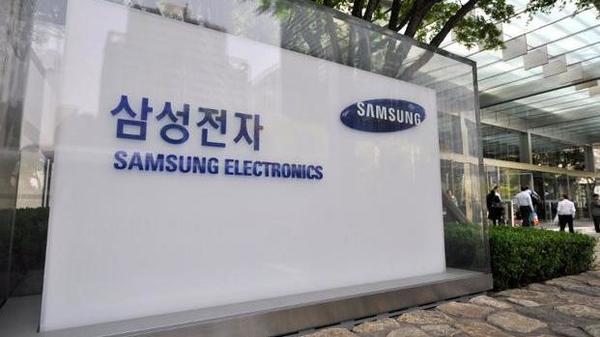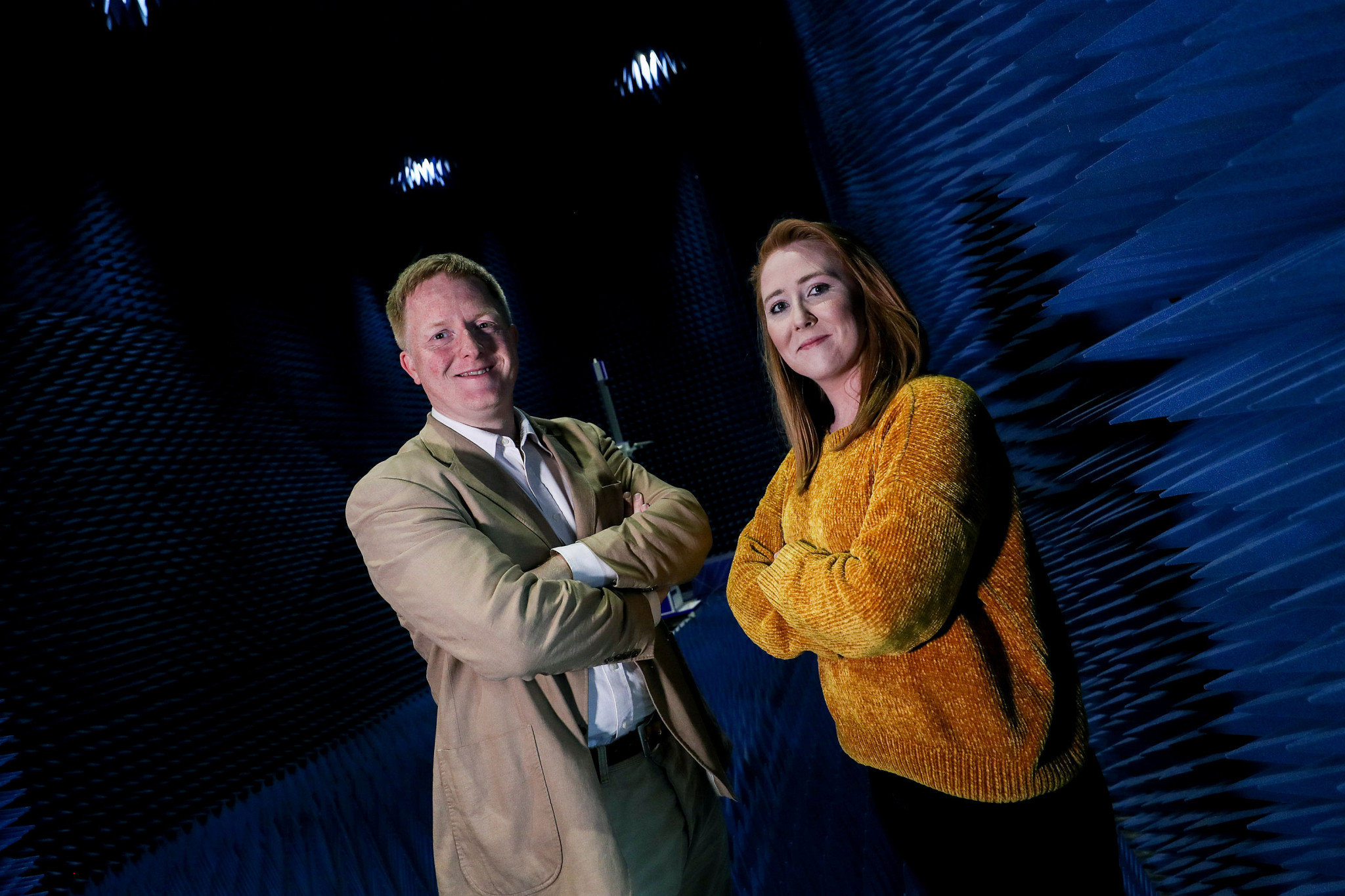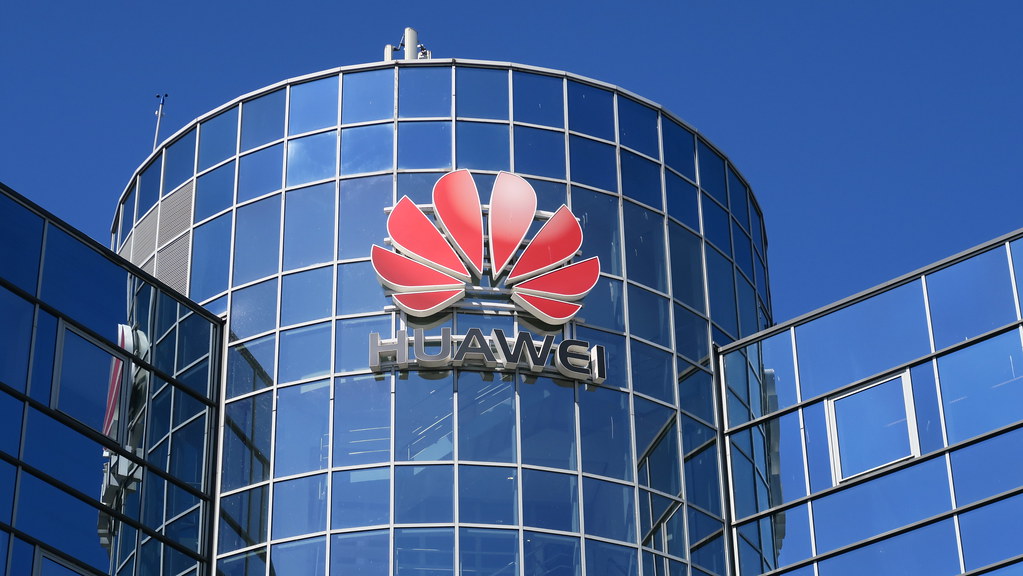Telecoms
Telecoms
Getting switched on for the switch off
Long before the distinctive chime of iPhone’s iMessage, digital communication had an equally infamous soundtrack. You probably recall the sound of the dial-up modem, which connected servers via public telephone networks. It was a — noisy — icon of another era of technology. We’ll soon be saying farewell to another area of communication history — the public switched telephone network (PSTN). Here, Kristian Torode Director and Co-Founder of business communications provider Crystaline, explains how you should now prepare to switch.
If your business’
phone calls are handled by a private automatic branch exchange (PABX) system, it’s
probably connected to a telephone network using an integrated services digital network
(ISDN). This is how you make phone calls, video calls, transmit data and other
network services over the circuits of the traditional PSTN. But by 2025, BT is
planning to switch off the ISDN network and the PSTN, as it moves to an
entirely IP-based model of voice communication.
Why
are we switching off?
The PSTN dates
back to 1875, and refers to a telecommunications network that allows
subscribers at different sites to communicate by voice. It forms a large part
of the UK’s telecoms infrastructure, and its functions include connecting voice
calls using analogue voice data and supporting digital services such as the
ISDN. Broadband products also rely on the service to work.
The PSTN is deemed
a legacy system. The equipment used to run it is aging and challenging to
maintain, as many of the components used to build the infrastructure are becoming
obsolete. The PSTN will be switched off in December 2025 and any services that
are reliant on the network, including the ISDN, will no longer be operational.
All ISDN/PSTN voice services will go to complete
end-of-sale from September 2023, starting with a series of trial zones in the
coming months. From now until 2025, infrastructure will be built to transfer
all current systems over to an ALL-IP configuration.
Those currently relying on the PSTN, and the ISDN,
will have until the end of 2025 to organise an alternative solution. However,
with the range of alternatives already available, businesses will benefit from
considering other options ahead of the switch off.
How do I prepare?
To help prepare your business for the switch off, it’s
important to know the modern telecoms solutions that can replace the ISDN/PSTN.
With the right technology in place, you can future proof your business while
improving current process performance.
A voice over internet protocol (VoIP) system is a
growing trend among businesses. VoIP allows you to make and receive calls
through your existing internet, rather than the PSTN or an ISDN network. Not
only will VoIP help businesses overcome the upcoming PSTN/ ISDN obsolescence,
but it can also bring a number of other business benefits.
When your calls are handled by a PABX system, you
need to factor ongoing maintenance costs of on-premise hardware, storage and
power requirements into your investment. With VoIP, all the system hardware is located
offsite in a data centre, meaning there’s no direct maintenance costs.
What’s more, because VoIP works independently from
local power, network or systems availability, you don’t have to worry about
business downtime should an unexpected event occur. If a flood, fire or power
failure makes your office inaccessible, you can still work from any internet
connection or mobile device. As more businesses choose to work flexibly, from
home or anywhere else in the world, having business communications available on
multiple devices will be key to remaining competitive.
Other alternatives
include Single Order Generic Ethernet Access (SOGEA). This offers similar
connectivity to a fibre to the cabinet service, but without the need for an
underlying PSTN product. SOGEA has wide availability across the UK, with coverage
in over 28 million premises, and can deliver speeds of up to 80 Megabits per
second (Mbps).
At Crystaline, we work closely with our customers to recommend the best telecommunications service for their needs. Switching from a system we’ve relied on for so long can seem daunting, but our expert team is able to recommend the correct telephony and connectivity services for you.
Beatrice - 17 May 2021
Infrastructure Management
Internet
Networking
News
Software & Applications
Telecoms
New laws to wipe out rural mobile 'not spots'
Mobile signal blindspots will be wiped out under government plans to level up rural areas with better connectivity and unlock tech innovation in the countryside.
The government is proposing law
changes to boost ongoing efforts to improve connectivity for people who
live, work and travel in rural areas.
The reforms will remove one of
the biggest barriers to better coverage in the countryside by reducing build
time and costs for new infrastructure while protecting rural areas by
minimising any visual impact.
Under the proposals, mobile
companies will be allowed to make new and existing masts up to five metres
taller and two metres wider than current rules permit. This will increase the
range of masts and allow operators to fit more equipment on them so they can be
more easily shared.
The move will turbocharge the
delivery of the £1 billion Shared Rural Network being built to eliminate 4G
mobile ‘not spots’ in the countryside and will speed up rollout of
next-generation 5G networks.
It will incentivise mobile
firms to focus on improving existing masts over building new ones, with fewer
new masts needed for rural communities to get a better signal now and to take
full advantage of future 5G-connected technology. This includes innovations in
remote healthcare, self-driving vehicles and smart devices such as fridges, TVs
and heating systems.
Stricter rules will apply in
protected areas, including national parks, the Broads, conservation areas,
areas of outstanding natural beauty and world heritage sites.
The plans also include proposals
to bring better mobile coverage for road users by allowing building-based masts
to be placed nearer to highways.
The news comes as industry
experts and academics set out recommendations on how to reduce the UK’s
reliance on a small number of equipment vendors in the telecoms supply chain.
Digital Secretary Oliver Dowden says: “We want to level up the country and end the plague of patchy and poor mobile signals in rural communities.
“Today we are setting out plans to make it easier for mobile firms to transform connectivity in the countryside and propel villages and towns out of the digital dark ages - providing a welcome boost for millions of families, businesses and visitors.
“These practical changes strike a careful balance between removing unnecessary barriers holding back better coverage, while making sure we protect our precious landscape.”
Most new masts will still need
to be approved by local authorities, which will have a say on where they are
placed and their appearance. Robust conditions and limits will remain in place
to make sure communities and stakeholders are properly consulted and the
environment is protected.
Hamish MacLeod, Director of Mobile UK, states: “We welcome the proposals set out in this consultation which will provide better certainty and flexibility to technological changes required to build world-class mobile networks. We urge the Government that to assist mobile companies to meet its ambitions targets for deployment, it brings about legislative change as quickly as possible.”
A joint technical consultation between the Department for Digital, Culture, Media and Sport (DCMS) and the Ministry for Housing, Communities and Local Government (MHCLG) has been published today with details of the changes. It follows an earlier consultation in 2019 on the principle of the reforms.
The consultation seeks views on
reforms to permitted development rights in England:
Existing mobile masts to be strengthened without prior approval, so that they can be upgraded for 5G and shared between mobile operators. This would allow increases to the width of existing masts by up to either 50% or two metres (whichever is greatest), and in unprotected areas allow increases in height up to a maximum of 25 metres (previously 20 metres). Greater increases will also be permitted subject to approval by the local authority.
New masts to be built up to five metres higher - meaning a maximum of 30 metres in unprotected areas and 25 metres in protected areas, subject to approval by the planning authority.
Greater freedoms for slimline ‘monopole’ masts up to 15 metres in height, which are less visually intrusive than standard masts and used for 5G rollout, in unprotected areas. This could mean operators notifying local authorities of their intention to proceed without needing prior approval. This would align it with current rights that telecoms operators have for telegraph poles.
Building-based masts to be placed nearer to highways to bring better mobile coverage to road networks, subject to prior approval, and in unprotected areas smaller building-based masts to be permitted without prior approval.
Cabinets containing radio equipment to be deployed alongside masts without prior approval and to allow greater flexibility for installing cabinets in existing compounds - fenced-off sites containing masts and other communications equipment - to support new 5G networks.
DCMS will also lead on a new
code of practice for mobile network operators. This will provide updated
guidance on how operators and local authorities can work together to build
communications infrastructure the country needs. It will also contain best
practice for the siting of new infrastructure, particularly in protected areas,
and ensuring stakeholders are properly consulted.
The consultation will run for
eight weeks and closes on 14 June 2021.
Telecoms Diversification
Taskforce - final report
Led by former BT boss Lord
Livingston of Parkhead, the Telecoms Diversification Taskforce was set up by
the government to provide independent advice on how to boost competition and
innovation in the UK telecoms market and build an open, sustainable and diverse
supply chain.
It follows the government’s
decision to remove Huawei equipment from UK 5G networks by 2027. While
necessary to protect national security, it means the UK will be reliant on only
two other 5G equipment suppliers: Nokia and Ericsson.
The taskforce’s report will support the government as it delivers its £250 million Diversification Strategy, mitigating the resilience risks to 5G networks ahead of the 2027 deadline so people can have confidence accessing the economic and social benefits brought by 5G. It recommends:
Working through telecoms standards-setting bodies to encourage best practice in security and open networks;Creating the right environment for diversification through policy interventions - for example, setting out a timetable for the winding down of 2G and 3G networks to support the entry of new vendors into the UK market; Identifying interventions and investment to accelerate the development and adoption of Open Radio Access Network technology, including setting up a fund for developing new products and ensuring testing facilities such as the UK Telecoms Lab and SONIC meet industry needs;Identifying opportunities to invest in long-term research and innovation to build UK capability for current and future generations of telecoms technology.
Now the taskforce has completed
its work, the government will study the findings and respond fully in due
course.
Matt Warman, Minister for Digital Infrastructure, says: “Our £250 million strategy will unleash a wave of innovation across the UK and make sure companies have a wide range of revolutionary 5G technology to choose from that is trusted and secure.
“I welcome today’s report from the Telecoms Diversification Taskforce. It will be instrumental in helping us prepare our networks for next-generation mobile technologies. We will now consider its recommendations and respond in due course.”
Lord Livingston of Parkhead, Chair of the Taskforce, comments: “It has been a privilege to lead the Taskforce and help drive forward the government's important work to diversify the telecoms supply chain and reduce reliance on high-risk vendors.
“The government’s Diversification Strategy set out a clear ambition and the Taskforce has suggested concrete actions and policy recommendations to help it meet its aims.
“The UK now has the opportunity to create a more diverse network and be an international leader in the adoption of next-generation network technology. This will present substantial opportunities for UK based suppliers and users alike.
“I would like to thank all of the Taskforce, made up of an outstanding team of experts from industry and academia, for their commitment and expertise in producing this report.”
Beatrice - 20 April 2021
Cloud
News
Product
Software & Applications
Telecoms
Pure sees customer adoption across geographies and industry segments
Pure Storage announced its continued growth of its Pure as-a-Service subscription offerings. Throughout the last year, Pure saw increased customer adoption in every key market globally. In Q4 alone, new Pure as-a-Service customers included major clouds, financial institutions, hospitals, telecommunications companies, and more, including a customer with a Pure as-a-Service commitment of more than $10M. In total, Pure’s annual subscription services revenue, which includes Pure as-a-Service and Evergreen and makes up more than 30% of total revenues, exceeded $500M in FY21, representing 33% year-over-year growth.
Pure has continued to advance its subscription services platform, reducing complexity by eliminating additional licenses and support costs, and delivering new levels of transparency not seen before in the storage industry. Pure’s Service Catalog, introduced in Q4, mirrors a public cloud experience, with increased granularity, and lower entry points designed to easily scale. Now, customers can use the new Cost Calculator to estimate their Pure as-a-Service monthly cost, making it even simpler for customers to choose the right storage service level for each workload.
“Only Pure delivers a true enterprise class utility with flexible storage consumption; a cloud experience on premise; an easy path to move data to the cloud at any time; and aligns spend with actual consumption. As customers continue to face dynamic business demands, Pure as-a-Service delivers the flexibility, simplicity and reliability they need.” says Prakash Darji, VP and GM, Digital Technology Services Group, Pure Storage
“Pure’s vision of storage as code proved its worth during the pandemic, enabling our customers to scale storage capacity to stay in step with rapidly changing demands. With Pure as-a-Service, our customers could pay for the exact capacity they needed while still getting the same performance and availability they’d have in a traditional cloud desktop.” comments Robert Green, President, Co-Founder, and CTO, Dizzion
"Pure was the only supplier to offer us a flexible, innovative, and scalable offering with Pure as-a-Service, which was the deciding factor. We were won over by its fully opex model, consumption-based billing and short-term contracts." adds Fabrice Joffre, Technical Director, Hopps
"We've found that with Pure as-a-Service we get all the benefits of a flexible consumption model without having to compromise on security." concludes Jo Verstappen, Chief Executive Officer, Open Line.
Beatrice - 15 April 2021
News
Telecoms
Composites manufacturer reveals telecommunications radome patent
Exel Composites has secured a patent across Europe for its telecommunications radome design. Four years in the making, the innovative material design will support the increasing roll out of fifth generation (5G) networks and will help telecommunications companies to overcome challenges with signal attenuation and protecting devices on the antenna.
Breaking into
the telecommunications market in the 1990s, Exel Composites’ expertise in the
industry predominantly involves the manufacturing of radomes. These structures
cover antenna systems and radar equipment, offering protection from the
environment. A key requirement for these radomes is that the material forming
them must be radio-transparent, so that signals can successfully pass through
them.
While 5G
technology is improving global broadband speeds, it has produced challenges for
telecoms equipment manufacturers. The value of 5G stems from its
ability to use a much higher frequencies in the signal to allow lower latency
and higher speed for 5G solutions. The downside is that high frequencies cannot
penetrate materials easy, restricting the reach to connected devices.
To accommodate this, radomes
must be manufactured from a low attenuating material that can be penetrated by
higher frequencies. Composite materials such as fiberglass help to mitigate
signal attenuation, while providing the necessary mechanical strength required
for long-lasting protective radomes.
Exel
Composites’ new patent includes a closed cell thermoplastic foam in its
structure. “The challenges with making a suitable radome involve striking the
balance between the attenuation and mechanical structure of the material”, said
Juha Pesonen, segment leader for telecommunications at Exel Composites.
“Foam has
been used in the design for its low density and rigidity, which supports the
easy transmission of radio waves. Combined with the mechanical strength of
fiberglass skins, we have created a material that is durable, stiff and can
provide the protection from the environment that antennae require.”
“The significance of this patent is the bespoke window that allows wavelengths to penetrate easier”, says Kim Sjödahl, Senior Vice President Technology and R&D at Exel Composites. “Rather than manufacturing the whole radome from the same density of material, we can alter it to meet customer requirements so that there is a specific insert creating a window, necessary for the radiowaves to pass through.
“Working closely with antennae manufacturers we optimize radome design accordingly based on the functionality and frequency of the antenna”, explains Pesonen. “Depending on this, we can tailor the combination of the fibers, resin and foam to enhance specific properties. For example, by creating greater mechanical strength or attenuation in required areas.
“It’s taken
four years from development until now to expand the patent into Europe,
demonstrating the complexity behind radome manufacturing”, continued Pesonen.
“Frequencies
have increased rapidly in the last decade, with 5G standards reaching 39 gigahertz
(GHz). Our manufacturing capabilities and material expertise allow us to
prepare for even higher frequencies, like that of 6G in the future. For the
time being, our radome patent will benefit our global network of
telecommunications customers, helping them to deliver the latest generation of
wireless technology.”
Exel Composites has supplied radome solutions to commercial customers in Europe and aims to roll the patent out across North America and China.
Beatrice - 5 March 2021
Telecoms
Forget 5G, Samsung kicks off 6G research
5G networks might only still be available in a few countries,
but that hasn’t stopped Samsung from commencing research into 6G.
Currently a minor, but growing, player in the telecoms equipment
world, Samsung is hoping to get the jump on 6G over big names like Ericsson,
Nokia and the embattled Huawei.
To support these efforts, the company has expanded its telecommunication
research team and created the Advanced Communications Research Centre, based
out of its home city of Seoul, South Korea. Here, Samsung whizzes will try to
puzzle together what will eventually constitute 6G – a subject that has yet to
be debated, let alone realised.
“The current
team on telecommunications technology standards has been expanded to start
leading research on the 6G network,” a Samsung spokesperson told The Korea Herald.
Early
predictions suggest that 6G could deliver staggering speeds of up to 1TBPS.
While few applications require such speeds today, who knows what’s going to be
needed in the future.
Naturally, we shouldn’t be
expecting 6G anytime soon, in fact, based on the 3G and 4G timetables, we won’t
probably won’t see it as commonplace until around 2030. So, if you were hoping
to put an upgrade off until 6G hits then you might be waiting a while.
South Korea is thought to have been the first to switch on the first commercial 5G mobile network earlier this year, followed closely by AT&T and Verizon launching its 5G services in the US. EE turned on the UK’s first 5G network earlier this month, with coverage limited in the busiest parts of six major cities in the UK.
Yesterday, Vodafone debuted its first 5G commercial network in Spain, ahead of its launch in the UK on July 3. Telecoms company, Three also announced that it will launch its 5G network this August in London, before extending it to 25 other UK towns and cities before the end of the year.
DCNN staff - 12 June 2019
Internet of Things
Telecoms
National 5G test centre opens at Maynooth University
RadioSpace, a new €1.5 million national test centre for next-gen wireless technologies such as 5G and IoT, has been opened at Maynooth University in Ireland.
The new 5G test centre, which is one
of the first of its kind in Europe, has been designed to provide a range of
services to developers of 4G mobile networks, IoT-enabled products, 5G and
mmWave devices.
RadioSpace, will be open to enterprises,
SMEs and start-ups, and will provide a unique, large scale, interference-free
facility for scientists and engineers from industry and universities, in
Ireland and internationally.
The facility consists of a
specially constructed anechoic chamber that provides perfect isolation for
radio signals. Nothing can enter, and nothing can leave. With advanced
test equipment and specialist engineers, this allows for very sensitive
measurements to be made, essential for the development of modern wireless
devices.
RadioSpace connects industry and
academic researchers. The aim, to address the full range of challenges in
developing new technologies and products for the next generation of wireless
devices.
The €1.5 million facility, which
has received €638,000 funding from Science
Foundation Ireland (SFI), is part of Connect - the world-leading SFI Research
Centre for future networks and communications.
This service is available to
SMEs, and access can be facilitated via the Enterprise
Ireland Innovation voucher scheme. This ensures that both SMEs and larger
organisations can avail of the technology and expertise of researchers in
Maynooth University.
According to Professor Philip
Nolan, President of Maynooth University, “This facility will serve as the
National 5G Test Centre for Ireland, providing a space for next-generation
wireless technologies to be tested, refined and applied on an international
scale. I’m pleased to say that RadioSpace will be available to all those who
can make good use of it, from leading researchers and innovators to students
just starting their careers, from the largest multinational to the smallest of
start-ups. Until now Irish industry working in this space has needed look
abroad to avail of similar facilities and I’m proud we are now in a position to
provide this centre of excellence right here in Maynooth.”
DCNN staff - 5 June 2019
Telecoms
EE launches the UK's first 5G network
EE
officially launched the UK’s first-generation 5G mobile network last night, May
29, with a 5G-powered performance by rapper Stormzy on the River Thames.
BT’s
EE subsidiary is the first to launch the service, offering its customers enviable
download speeds of up to 200Mbps and, for the avid gamer, lower latency.
There’s
a caveat to being able to take advantage of the new network, however, as
customers will require a compatible handset and need to live in the right
place.
At
first, the service will only be available in limited areas of Belfast, Birmingham,
Cardiff, Edinburgh, London and Manchester.
The
lowest-priced deal will set you back £54 a month plus a one-off £170 fee for a
5G handset. But keep in mind that the deal will only buy you a mere 10GB of
data, which you’ll likely chew through fairly quickly if you plan on
downloading lots of media.
For
many people it may make sense to wait it out, especially as rival Vodafone will
switch on its 5G service on July 7.
But don’t expect seamless 5G connectivity in these areas straight away, in fact it will likely be patchy sometimes only offering outdoor connectivity and sometimes none at all – so customers will probably default to a slower 4G signal much of the time.
What about Huawei?
Despite looking like the UK was going to give the green light on the use of the Chinese tech giants telecoms equipment, Theresa May's resignation makes things less clear.
Barring the use of Huawei's product would prove a major headache for operators and that's not just for 5G networks, but 4G too.
EE, which has already rolled-out their 5G network, and Vodafone, which plans to switch on its 5G network on July 3, would have to strip out their existing kit.
While mobile operator Three has also said that its 5G roll-out could be delayed by 18 months if the government bans the use of Huawei's equipment.
DCNN staff - 30 May 2019
Telecoms
EE to launch 5G service in May
EE will switch on its 5G
service in six cities on May 30, ahead of rival Vodafone’s
release date in July.
If you are an EE customer in
Belfast, Birmingham, Cardiff, Edinburgh, London and Manchester then long wait
for 5G is very nearly over. If you are not in one of these cities where EE is
launching 5G it will not necessarily be long until are, with EE announcing
plans for 10 more cities to be added this year.
Prices for 5G – which
require 5G compatible handsets or routers to take advantage of the technology –
will start at £54 per month for 10 gigabytes of data.
“This is the start of the UK’s
5G journey and great news for our customers that want and need the best
connections,” says Marc Allera, Chief Executive of BT’s consumer division,
which owns EE.
Though there is a long road
ahead, with EE admitting that its launch is just the first phase of its
roll-out, with “full next-generation 5G” not available until 2022.
Several other countries have
announced 5G services, including South Korea and the US.
According to the mobile
operator there will be three major improvements for customers making the swap
from 4G to 5G:
Increased capacity – making it easier to get service in busy
places such as railway stations and stadiums.Average speeds will go to 150Mbps compared with a top speed
of 50Mbps when 4G was launched.Low latency – of particular benefit for new services such as
those using augmented reality.
Like other UK mobile
operators EE currently uses Huawei’s equipment, though says it is in the
process of removing it from its 4G network.
Mr Allera told the BBC, “There is no current government guidance
to suggest we should not use Huawei, but if the guidance changes we will
reconsider. That will be disruptive but there are other people that provide the
equipment.”
DCNN staff - 22 May 2019
Telecoms
Google restricts Huawei’s use of Android
The second biggest
smartphone maker, Huawei, has been dealt another blow as a result of the ongoing
US-China trade dispute.
Following the news that the
telecoms giant has been added to America’s ‘Entity List’ – a move that bans the
telecom giant from buying parts and components without official approval
– Google has barred Huawei from some updates to the Android operating
system.
Reuters
reported
on Sunday that Google suspended all business with Huawei that requires the
transfer of hardware, software and technical services, except those publicly
available. With new designs of Huawei smartphones potentially losing access to
apps such as YouTube, Gmail and Maps.
In a response to the Trump administration, Google announced it was "complying with the order and reviewing the implications."
Google has reiterated, however, that current owners of Huawei phones will retain their access to the Play Store and continue to be able to update their apps.
Huawei's first official response to having its Android license revoked by Google, seems to leave more questions than it answers.
In a statement emailed to DCNN,
Huawei accentuates its contributions to the growth of Android globally whilst
reassuring current owners of Huawei and Honor phones that they will continue to
receive security updates and after-sales service. This promise is extended to phones
that are already shipped and in stock at stores globally, though it is unclear
about handsets beyond that.
“Huawei has made substantial contributions to the development and
growth of Android around the world. As one of Android’s key global partners, we
have worked closely with their open-source platform to develop an ecosystem
that has benefitted both users and the industry.
Huawei will continue to provide security updates and after sales services to all existing Huawei and Honor smartphone and tablet products covering those have been sold or still in stock globally.
We will continue to build a safe and sustainable software ecosystem, in
order to provide the best experience for all users globally.”
The official
statement released Monday differs somewhat in tone to an announcement made by
Huawei’s founder, Ren Zhengfei to Chinese media today, who says the US ‘underestimates’
the Chinese telecom makers strength; alluding that conflict with the US is
inevitable in the tech giants quest to ‘stand on top of the world.’
“Huawei’s 5G will absolutely
not be affected. In terms of 5G technologies, others won’t be able to catch up
with Huawei in two or three years. We have sacrificed ourselves and our
families for our ideal, to stand on top of the world. To reach this ideal, sooner
or later there will be conflict with the US.”
The Chinese telecommunications
equipment maker has become a focal point in a protracted trade war with the US.
The new restrictions set to make it extremely difficult for Huawei to do
business with US companies including major companies such as Qualcomm, Intel, Broadcom
and Xilinx.
DCNN staff - 21 May 2019
Telecoms
Huawei chairman agrees to sign ‘no-spy’ deal
Chinese telecom giant Huawei is
willing to sign ‘no-spy agreements’ with governments including the UK, the
company’s chairman, Liang Hua said last Tuesday, as the head of NATO said
Britain must ensure the security of its mobile networks.
It follows fears from some
countries that Huawei would have no choice but to hand over network data to the
Chinese government if asked for it.
The Chinese company has vehemently denied
the claims that it poses any risks of espionage; adding that it is independent
from the Chinese Government. Nevertheless, some countries, including Australia
and New Zealand, have blocked it from their 5G networks on national security
grounds.
After months of uncertainty, the UK
appears set to allow Huawei’s telecoms equipment to be part of the country’s 5G
networks, with some
limitations.
“We are willing to sign no-spy
agreements with governments, including the UK government, to commit ourselves
to making our equipment meet the no-spy, no-backdoors standard,” Laing told
reporters at a business conference last Tuesday.
Huawei currently has the most
advanced and cheapest 5G service in the world.
Washington has warned the UK that it may have to limit security and intelligence sharing if it allows the Chinese telecom company to play a significant role in the 5G network.
The worlds two largest economies
have been locked in a bruising trade battle for the past year. Earlier this
month, the US more than doubled tariffs on $200 billion (£154.9 billion) of
Chinese goods which prompted China to impose tariff hikes on US products.
The Huawei debate has drawn Britain
into China’s battle for global dominance with the US. It has also split Prime Minister
Theresa May’s cabinet in two – those who view China as an essential trade
partner in Britain’s post-Brexit future and ministers who agree with Washington’s
view of Beijing being a surveillance threat.
DCNN staff - 20 May 2019

Head office & Accounts:
Suite 14, 6-8 Revenge Road, Lordswood
Kent ME5 8UD
T: +44 (0)1634 673163
F: +44 (0)1634 673173









